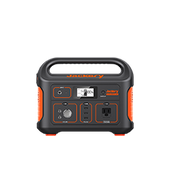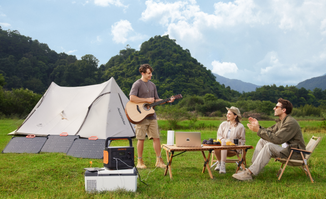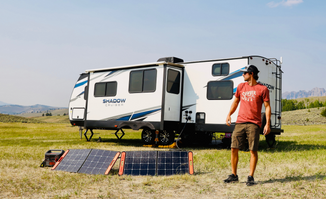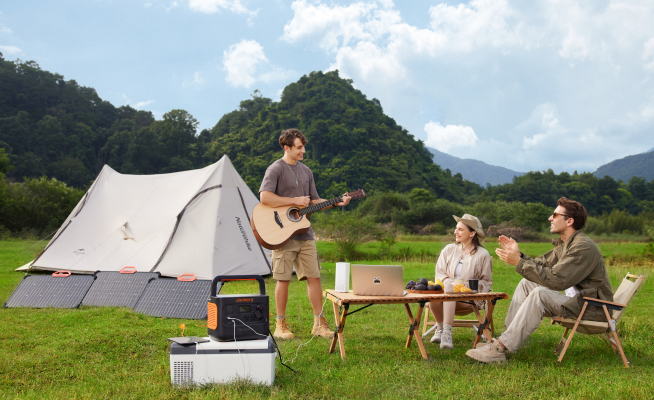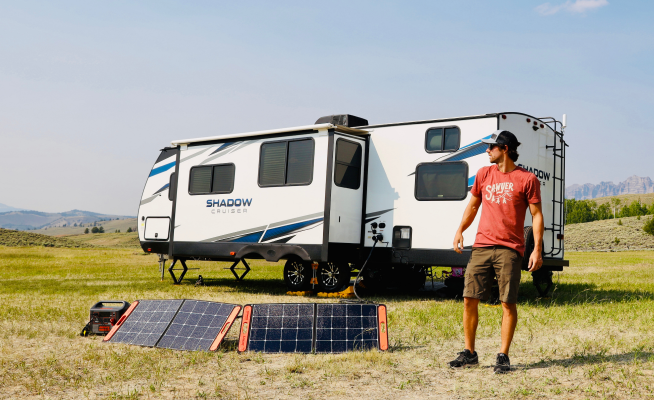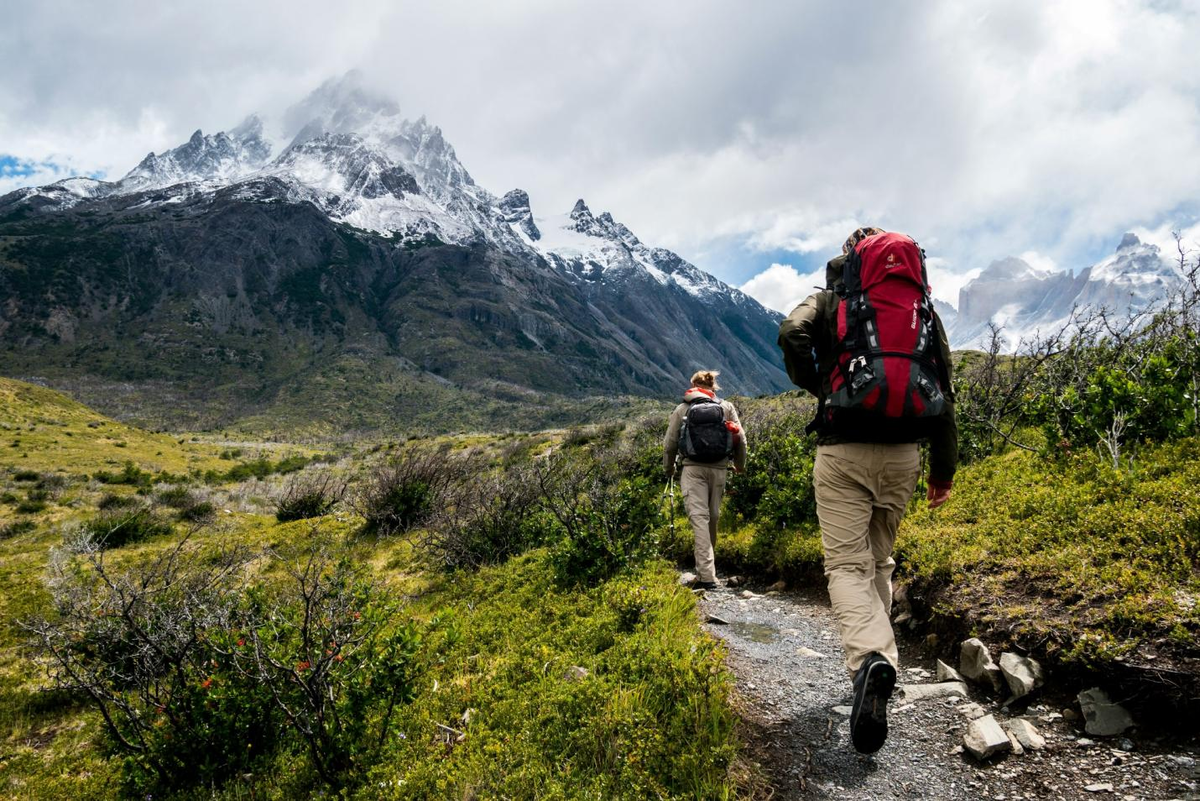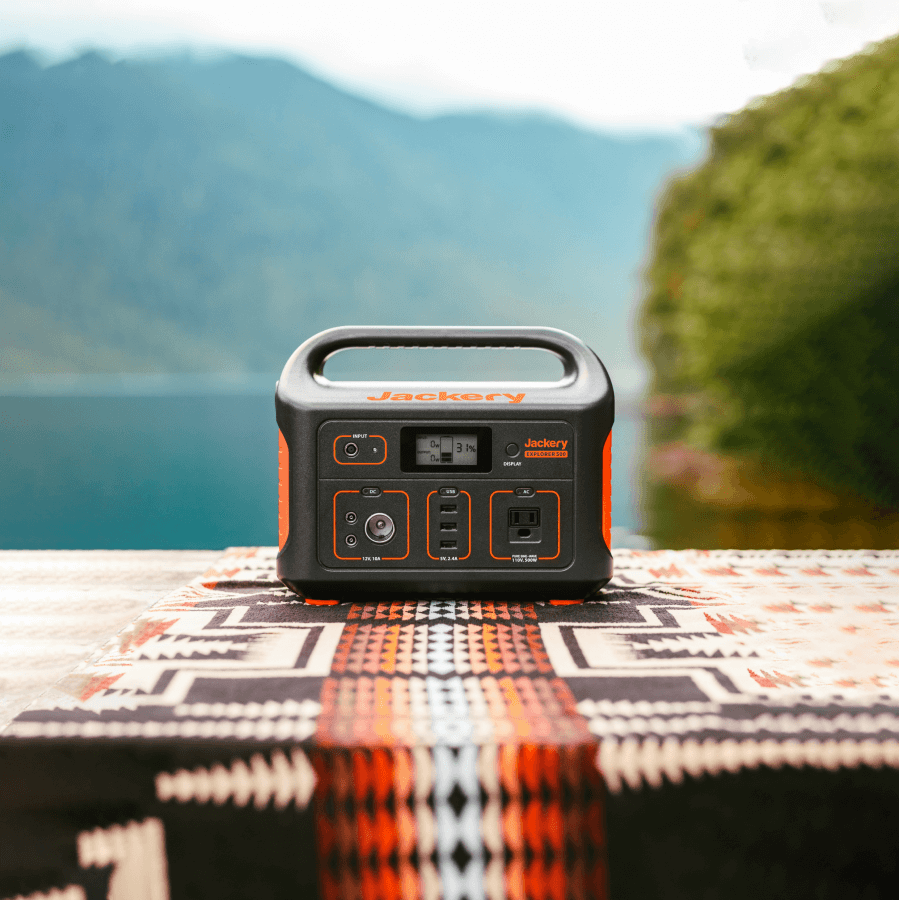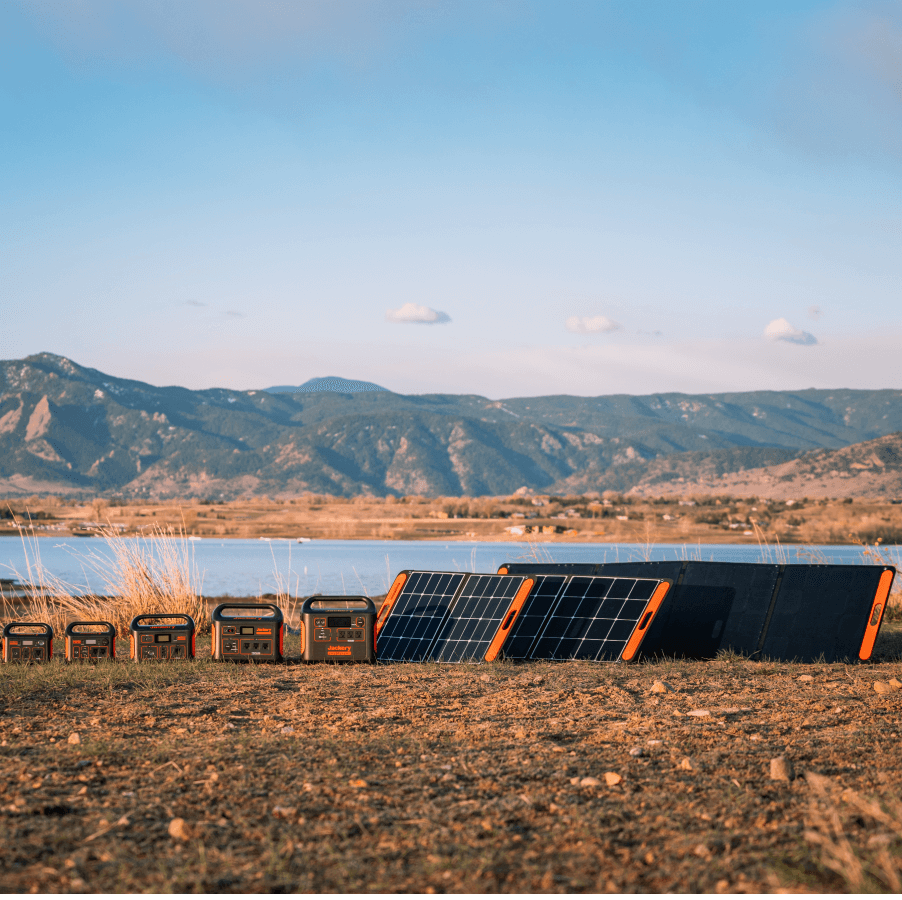Without a doubt, Canada's vast wilderness offers some of the most stunning hiking trails in the world.
The towering peaks of the Rockies, the coastal paths of Nova Scotia, the rugged beauty of Gros Morne National Park in Newfoundland, and the stunning alpine trails of Garibaldi Provincial Park in British Columbia are only a few places that are worth visiting for a fulfilling hiking experience.
But before you embark on your hiking journey, remember that preparation is key to a smooth and safe adventure. Packing the right gear, planning your route, and investing in a solar-powered generator can make all the difference. A portable solar power station from a reputable brand will ensure you stay connected throughout the trip.
Are you ready to embark on your next hiking journey? Here is how to prepare like a pro!
How To Prepare for A Hike?
Embarking on a hiking journey is an exhilarating way to connect with nature, challenge yourself physically, and experience the serenity of the outdoors. All these happy experiences rely heavily on proper preparation.
Here is a comprehensive guide on how to prepare for a hike:
1.Determine the Purpose of Your Hike
Before hitting the trail, consider your goals. Are you hiking for fitness, photography, solitude, or adventure? Understanding your purpose allows you to select the right gear, estimate time, and prepare accordingly. A short-day hike requires different planning compared to a multi-day backpacking trip.
2.Choose the Right Trail
You must select the right trail, depending on your purpose and level of experience. The Parks Canada Agency has a detailed guide to trail ratings and descriptions to help hikers choose appropriate trails. Trails are categorized as:
- Easy: 0 to 5 km, suitable for beginners, hard-packed surfaces with minimal elevation changes.
- Moderate: Up to 15 km, requires basic trail experience, includes some elevation changes, and possible obstacles.
- Difficult: Over 15 km, significant elevation changes, demands trail experience; features significant elevation changes and varied terrains.
- Route: Unmaintained trails, exceptional navigational skills required.
Assessing trail distance, elevation, and conditions ensures a suitable match for your capabilities.
3.Proper Training Preparation
If you are new to hiking or planning a strenuous trek, physical preparation is crucial. Test your body with a moderately long walk to start. Gradually increase the intensity by incorporating uphill hikes and carrying a weighted backpacking pack. Strength and endurance training will help prevent injuries and improve stamina on the trail.
4.Check Weather Forecasts
Weather conditions can significantly impact your hiking plan, especially if you are planning to hike in mountainous regions where weather can change rapidly. Therefore, check the weather reports for your planned hiking area before you set out, and be prepared for sudden changes like temperature drops, rain, or snow. Apps and websites provide real-time updates to help you plan accordingly.
5.Pack Your Baggage Right
Packing right is key to a comfortable and safe hiking experience. Essentials include:
- Navigation tools: GPS, compass, and a map
- Safety gear: First-aid kit, whistle, multi-tool, and headlamp
- Power backup solutions: A portable solar power station or solar power bank to keep devices charged.
- Hydration: Water bottles or hydration reservoirs and water purification methods.
- Food and water: High-energy snacks and hydration solutions
- Camping gear (for overnight hikes): Lightweight tent, sleeping bag, and cooking essentials.
6.Wear in Layers
Dressing in layers is the most recommended way to accommodate varying weather conditions and stay comfortable during hiking.
- The base layer should manage moisture effectively. Some moisture-wicking fabrics recommended are merino wool and synthetic materials. They prevent sweat from lingering on your skin and avoid chills.
- The insulating layer helps retain body heat, making fleece or down an excellent choice for this purpose. This layer traps warmth, keeping you comfortable in colder temperatures.
- Finally, the outer layer serves as a durable shield against wind, rain, and snow.
By layering correctly, you can easily adjust your clothing throughout the hike, adding or removing layers as needed to maintain the perfect balance of warmth and breathability.
7.Put on Appropriate Footwear
Your choice of footwear can make or break your hike. Proper footwear directly impacts your comfort and stability on the trail.
For short, easy hikes, lightweight trail shoes may be enough, but hiking boots with ankle support and a good grip are essential for rugged terrain to prevent slips and injuries. Further, it is important to break in new boots before your trip to avoid painful blisters and discomfort.
Moisture-wicking socks are also recommended to help reduce friction and keep your feet dry. Additionally, consider using insoles for extra arch support, especially for long-distance hikes or if you have specific foot concerns.
8.Pay Attention to Hydration and Nutrition
Staying hydrated is crucial, especially on long hikes. Dehydration can result in fatigue, dizziness, and decreased performance. Remember to do the following:
Bring along a water bottle or a hydration pack with a suitable capacity. Consider taking a portable water filter or purification tablets so that you can refill from natural sources like streams or lakes. Pack energy-rich foods like nuts, protein bars, and dried fruits to maintain your stamina and keep your energy levels up.
For longer treks, include electrolyte supplements to replenish lost minerals and prevent muscle cramps. Eating small, frequent snacks rather than large meals helps sustain energy levels throughout your hike.
9.Know Hiking Rules
Different trails have specific regulations regarding camping, fire restrictions, and waste disposal, so it's essential to familiarize yourself with local guidelines before setting out.
Additionally, it is every hiker's responsibility to follow Leave No Trace principles to safeguard nature and preserve the beauty of the outdoors. Carry out all trash to keep trails clean and avoid harming wildlife, and stay on designated trails to prevent erosion and preserve fragile ecosystems.
Respect wildlife and fellow hikers by maintaining a safe distance from animals and keeping noise levels down. Additionally, if camping is allowed, set up your tent in designated areas to minimize your impact.
10.Learn How to Stay Focused and Motivated
Long hikes can be mentally challenging, especially on rugged trails or during bad weather. Set small goals along the way to maintain a sense of progress, take breaks to enjoy the scenery, and stay engaged with activities like photography or journaling.
Hiking with a group or listening to nature sounds can also keep you motivated and make the journey more enjoyable. If you are hiking alone, creating a playlist of your favourite songs or just immersing yourself in the natural sounds can help keep your mind engaged and push you through challenging sections of the trail.
11.Inform Someone About Your Hiking Plans
Before heading out, tell your friend or family member your hiking itinerary, expected return time, and emergency contacts. This is especially important for solo hikers and remote trail explorers.
Let Jackery Power Your Every Hiking Journey!
When going to hike, having a reliable energy source is essential for keeping your devices well-charged and ensuring safety on the trail. When it comes to backpacking solar power, Jackery offers some of the best portable power stations for outdoor adventures. Lightweight, durable, and solar-compatible, these power solutions provide a steady energy supply without adding extra bulk to your gear!
1.Jackery Explorer 100 Plus Portable Power Station

The Jackery Explorer 100 Plus Portable Power Station is perfect for those who need ultra-lightweight power on the go.
Weighing only 965 grams, this mini power station fits easily in your pack while delivering a 99Wh capacity and 128W output. It can charge up to three devices at once, featuring 100W Dual PD Output and USB-A connectivity. This makes it ideal for powering smartphones, GPS devices, and cameras during your hike.
With a long-lasting LiFePO4 battery rated for 2,000+ cycles, it is built for durability. The power station charges in just 1.8 hours via a PD adapter and 2 hours via solar panels, making it a versatile off-grid power solution.
2.Jackery Explorer 300 Plus Portable Power Station

For hikers who need more power without extra weight, the Jackery Explorer 300 Plus Portable Power Station is an excellent choice.
Weighing just 8.27 lbs, this compact station delivers a 288Wh capacity and 300W output, making it perfect for charging laptops, cameras, and portable lights. It is designed for extreme reliability and features 52 protective mechanisms and a long-lasting LiFePO4 battery that ensures up to 10 years of use.
Furthermore, the Jackery Explorer 300 Plus Portable Power Station can be easily paired with foldable solar panels, allowing for flexible charging while on the trail. With smart app control, you can monitor and optimize battery usage from your phone.
Top Hiking Routes in Canada for Every Type of Hiker
As we discussed before, Canada's vast landscapes offer stunning hiking routes, from rugged coastal paths to mountain trails with breathtaking views. Whether you are looking for a day hike, a multi-day trek, or a family-friendly trail, here are some of the best hiking routes to explore.
1.Auriol Trail, Kluane National Park (Best for Day Hikes)
Location: Yukon Territory
Distance: 15 km loop
Estimated Time: 4–6 hours
If you are looking for a scenic day hike with a mix of forest, alpine meadows, and mountain views, Auriol Trail in Kluane National Park is an excellent choice. This moderate trail gradually ascends through boreal forests, offering glimpses of wildlife like Dall sheep and grizzly bears.
Higher up the trail, you will reach a stunning alpine meadow, perfect for a lunch break with breathtaking views of the surrounding mountains. The descent offers equally beautiful vistas, making this trail a rewarding loop hike for nature lovers.
2.East Coast Trail, Newfoundland (Best for Multi-Day Hikes)
Location: Newfoundland
Distance: 336 km (multiple sections)
Estimated Time: Varies (1–10 days, depending on the section)
The East Coast Trail in Newfoundland offers an unforgettable experience for hikers who enjoy long-distance trekking.
Stretching 336 km along the Atlantic Ocean, this trail features towering cliffs, dramatic sea stacks, and historic fishing villages. Popular sections include the Spout Path, where you can witness a natural geyser, and the Cape Spear Path, which leads to the easternmost point of North America.
Since this is a multi-day hike, camping or staying in nearby villages is recommended. It is one of Canada's most scenic and challenging hikes, with breathtaking ocean views and rugged coastal terrain.
3.Skyline Trail, Nova Scotia (Best for Water Views)
Location: Cape Breton Highlands National Park, Nova Scotia
Distance: 6.5 km return (or 8.2 km loop)
Estimated Time: 2–4 hours
The Skyline Trail in Cape Breton Highlands National Park is a must-visit for hikers seeking panoramic ocean views.
This trail is famous for its stunning cliffside boardwalk, which offers sweeping views of the Gulf of St. Lawrence. The trail is relatively easy to start, with a gradual ascent leading to the famous lookout point. You might spot moose, bald eagles, and even whales in the distance along the way.
Sunset hikes here are particularly spectacular, as the sky lights up over the Atlantic, creating an unforgettable experience.
4.Cape Split, Nova Scotia (Best for Coastal Hikes)
Location: Cape Split Provincial Park, Nova Scotia
Distance: 13 km round trip
Estimated Time: 4-6 daylight hours
Located along the Bay of Fundy, Cape Split is an iconic coastal hike known for its dramatic cliffs and tidal views.
The trail winds through a lush forest before opening up to stunning cliffs overlooking the world's highest tides. At the summit, hikers can enjoy breathtaking views of the rocky coastline and powerful waves below.
Don't forget to check the tide schedule to plan your hike accordingly. Some recommend the best time to hike Cape Split is during low tide when the exposed seabed creates a fascinating landscape. It is a moderate hike, suitable for most skill levels, making it one of Nova Scotia's most popular trails.
5.Cup & Saucer Trail, Ontario (Best for Family Hikes)
Location: Manitoulin Island, Ontario
Distance: Vary from 2 to 12 km
Estimated Time: 1.5–4 hours
For families or beginner hikers looking for an adventure with rewarding views, the Cup & Saucer Trail is a fantastic option.
Located on Manitoulin Island, this trail features a mix of forest paths, rocky climbs, and breathtaking lookouts over Lake Huron. The highlight of the trail is the high limestone cliffs, offering panoramic views that make the hike well worth the effort.
The trail has multiple routes, including a longer, easier path for families and a shorter yet more adventurous 'Adventure Trail' with ladders and steep climbs for thrill-seekers.
Conclusion
As we mentioned before, proper preparation is the key to a safe and enjoyable hiking journey. From choosing the right trail and packing essential gear to staying hydrated and dressing appropriately, every step ensures a smoother adventure.
You will also need reliable backup power to ensure safety and comfort. Whether you are heading out for a day hike or a multi-day trek, Jackery's portable power stations keep your devices charged, your campsite lit, and your adventure worry-free!









































![[Add-on] Jackery Manual Transfer Switch for Explorer 5000 Plus](http://ca.jackery.com/cdn/shop/files/add-on-jackery-manual-transfer-switch-for-5000-plus-240V.webp?v=1757043692&width=170)











